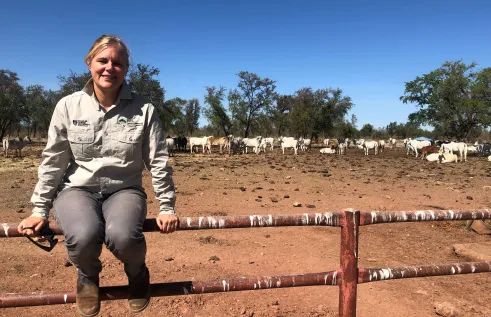News
Does increasing farm productivity relieve pressure on remaining natural areas? A new study suggests no, except where Indigenous people manage the land
Increasing farming intensity increases pressure to clear remnant native vegetation, a new study has shown. It is the opposite of what was expected.
The ground-breaking international collaboration between researchers in Germany, Belgium, Spain and Charles Darwin University (CDU) in Australia found that deforestation was highest in export-focused countries.
CDU Conservation and Sustainable Livelihoods Professor Stephen Garnett, who participated in the research, said it had been hoped farmers would be satisfied with less land if they could earn more per hectare.
“The finding is alarming”, said Professor Garnett, “Policymakers have been hoping intensification can help protect remaining biodiversity.”
The researchers used maps of forest loss between 2000 and 2020 and agricultural production statistics to analyse the relationship between deforestation and intensification.
The team based their study on tropical dry forests around the world.
Lead author, Marie Pratzer from Humboldt University in Berlin, said tropical dry forests are crucial for global biodiversity, carbon storage, and the livelihoods of hundreds of millions of people.
“This is a significant finding,” Marie Pratzer said.
“It shows that policies that aim to increase agricultural intensity will not magically protect forests.”
The researchers did find an exception to the trends they observed.
On the lands of Indigenous peoples, increasing returns from existing farmland did reduce the amount of new land cleared, as had been hoped.
“We found out that farmers trying to meet their own needs cleared less land”, said Professor Garnett, “Only farmers exporting their produce wanted ever more land.”
Professor Garnett says the findings are relevant to Australia given pressures to clear land for agriculture in northern Australia.
“Economic pressures to maximise short-term gains from land are very high”, said Professor Garnett
“Only well-enforced land-use zoning, and a potentially a stronger Indigenous voice in land use decisions, will ensure the existing values of natural lands are not lost”, he said.
A paper on the research was published this week in the leading journal Nature Sustainability.
Related Articles

Where rubber meets the road: Old tyres are key to building tougher roads
Almost half of the Northern Territory’s worn-out tyres end up in landfills – with the rest exported interstate for recycling – but a study led by Charles Darwin University (CDU) is repurposing the discarded rubber to build stronger, sustainable roads that meet the NT’s unique needs.
Read more about Where rubber meets the road: Old tyres are key to building tougher roads
Social media subjecting Black women to radicalised digital policing
Influencers use oppression, manipulation and weaponisation to police Black women on social media, according to new research uncovering the entrenched nature of digital racism.
Read more about Social media subjecting Black women to radicalised digital policing
Moo-ving the boundaries: New research evaluates virtual fences for use on NT cattle stations
Cattle producers in Northern Australia face unique challenges when adapting tools like virtual fences on their properties, but new research from Charles Darwin University (CDU) is set to break down the barriers to this technology.
Read more about Moo-ving the boundaries: New research evaluates virtual fences for use on NT cattle stations
